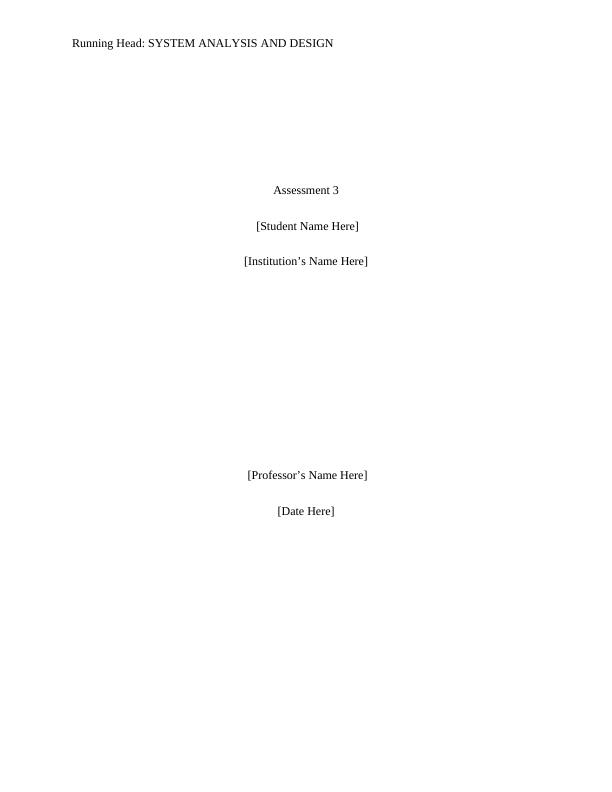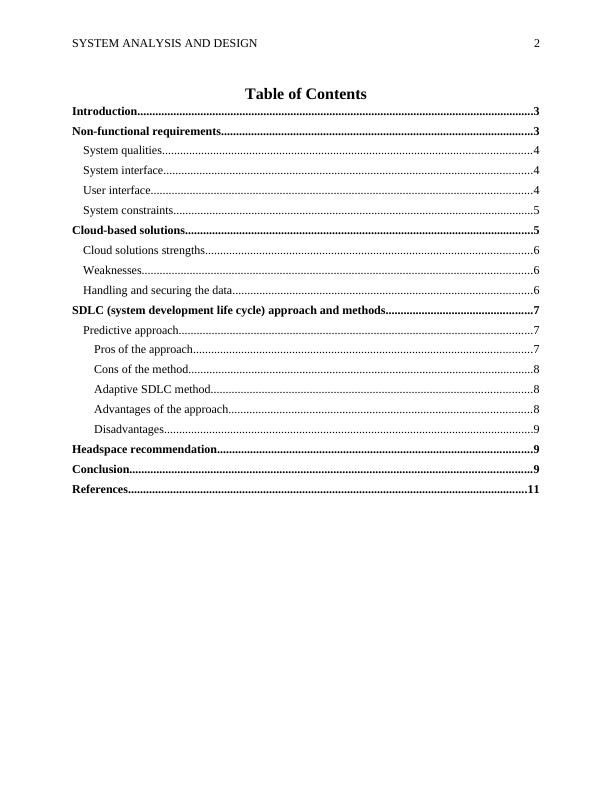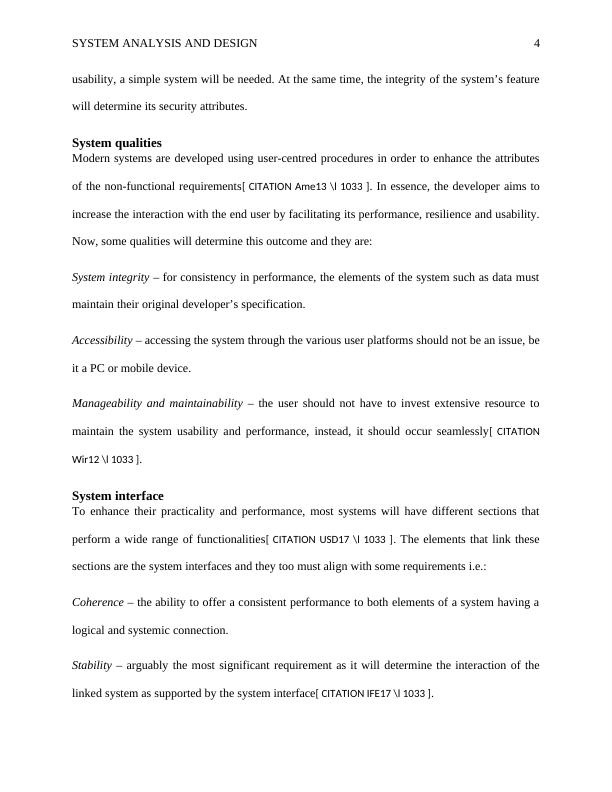SYSTEM ANALYSIS AND DESIGN 12 Running Head: System ANALYSIS AND DESIGN 12
13 Pages2777 Words157 Views
Added on 2020-03-15
About This Document
SYSTEM ANALYSIS AND DESIGN 12 Running Head: SYSTEM ANALYSIS AND DESIGN Assessment 3 [Student Name Here] [Institution’s Name Here] [Professor’s Name Here] [Date Here] Introduction 3 Non-functional requirements 3 System qualities 4 System interface 4 User interface 4 System constraints 5 Cloud-based solutions 5 Cloud solutions strengths 6 Weaknesses 6 Handling and securing the data 6 SDLC (system development life cycle) approach and methods 7 Predictive approach 7 Pros of the approach 7
SYSTEM ANALYSIS AND DESIGN 12 Running Head: System ANALYSIS AND DESIGN 12
Added on 2020-03-15
ShareRelated Documents
End of preview
Want to access all the pages? Upload your documents or become a member.
System Analysis and Design - Headspace Project
|11
|2353
|94
System Design and Analysis Assignment
|11
|2251
|76
System Analysis & Design | Assignment
|12
|2693
|215
Headspace Project Assignment
|12
|2626
|213
System Analysis and Design - UI and System Interface
|12
|2727
|260
System Analysis and Design | Assignment
|15
|3651
|226




